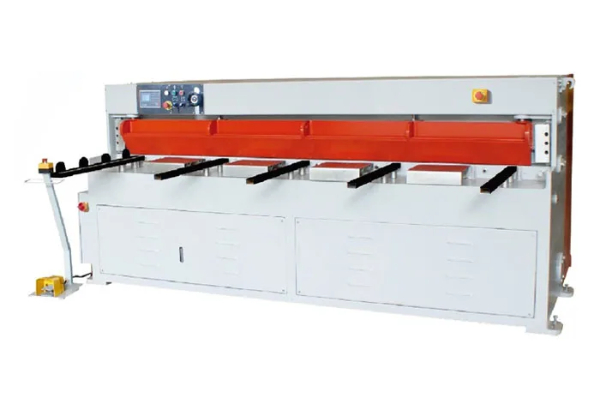
Considerations When Purchasing a Box and Pan Brake Machine
- By:Metmac
- 2024-09-10
- 157
In the realm of metal fabrication, where precision and efficiency reign supreme, the box and pan brake machine emerges as an indispensable tool. Whether you’re a seasoned professional or an aspiring craftsperson, selecting the right machine for your needs is a crucial decision that warrants careful consideration. Embark on this journey as we unveil the key factors to ponder when purchasing this transformative machinery.
1. Capacity and Material Thickness:
The first step lies in determining the maximum material thickness and width your machine must handle. Thicker materials require a greater bending force, translating into a more powerful press. Consider the types of materials you typically work with, such as aluminum, steel, or stainless steel, as they possess varying bendability characteristics.
2. Bending Angle and Radius:
Identify the range of bending angles you need to accommodate. While most machines offer a typical range of 90-135 degrees, specialized models can handle angles beyond this. Additionally, the minimum bending radius of the machine determines the tightest curves it can produce without deformation.
3. Automation and Controls:
Automation features can streamline your operations and enhance precision. Look for machines with programmable controllers that allow for repetitive bends with minimal manual intervention. Touchscreen interfaces provide user-friendly operation and facilitate rapid setup changes.
4. Safety Features:
Safety should be paramount in your decision. Ensure the machine you choose conforms to industry safety regulations and incorporates measures such as emergency stops, guarding, and foot pedals for hands-free operation.
5. Maintenance and Support:
Regular maintenance is essential to prolong the life of your brake machine. Consider the availability of spare parts and technical support from the manufacturer. Also, assess the ease of accessing critical components for cleaning and lubrication.
6. Brand Reputation and Warranty:
Investing in a reputable brand can provide peace of mind. Research the history and track record of potential manufacturers. Moreover, a comprehensive warranty ensures coverage against manufacturing defects and unexpected breakdowns.
7. Space Requirements and Portability:
Determine the physical space constraints in your workshop and the portability requirements for your machine. Larger machines offer higher capacities but may need dedicated floor space. Conversely, smaller portable models provide flexibility but may have limitations in terms of capacity.
By carefully considering these factors, you can make an informed decision that will empower you with the ideal box and pan brake machine for your unique needs. Unleash your creativity and elevate your metal fabrication capabilities by choosing a machine that meets your demands, exceeds your expectations, and becomes a trusted ally in your workshop.
-
Advanced Sheet Metal Rolling, Cutting, and Folding Machines for Efficient Fabrication
2025/10/22 -
High-Precision Sheet Metal Bending and Cutting Solutions for Modern Manufacturing
2025/10/22 -
High-Precision Solutions from Leading Sheet Metal Cutting Machine Manufacturers
2025/09/11 -
Reliable Sheet Metal Equipment for Sale to Support Precision Fabrication
2025/07/17
-
Advanced Sheet Metal Rolling, Laser Cutting, and Folding Machines for Precision Fabrication
2025/10/31 -
High-Performance Sheet Metal Bending and Cutting Machines for Modern Fabrication
2025/10/31 -
High-Quality Sheet Metal Equipment for Sale: Efficient Solutions for Modern Manufacturing
2025/10/31 -
High-Performance Sheet Metal Equipment for Sale: Forming and Shearing Solutions for Modern Fabrication
2025/10/22
-
Integrating Automation with Rectangular Duct Machines for Enhanced Productivity
2024/05/11 -
Metal Shear Machines- Essential Tools for Precision Metal Cutting
2024/05/11 -
Understanding the Role and Function of Steel Strip Slitting Machines
2024/05/11 -
Maintenance Tips for Longevity of HVAC Duct Machines
2024/05/11
-
A Guide to the Latest Innovations in Sheet Metal Folding Machines
2024/11/29 -
Key Features to Consider When Investing in a Sheet Metal Folding Machine
2024/11/28 -
Enhancing Precision with Advanced Sheet Metal Folding Machines
2024/11/27 -
How to Choose the Right Sheet Metal Folding Machine for Your Workshop
2024/11/26






